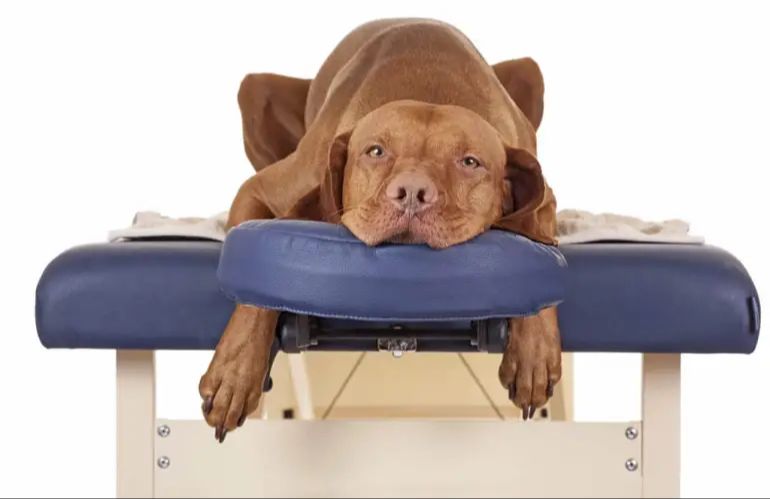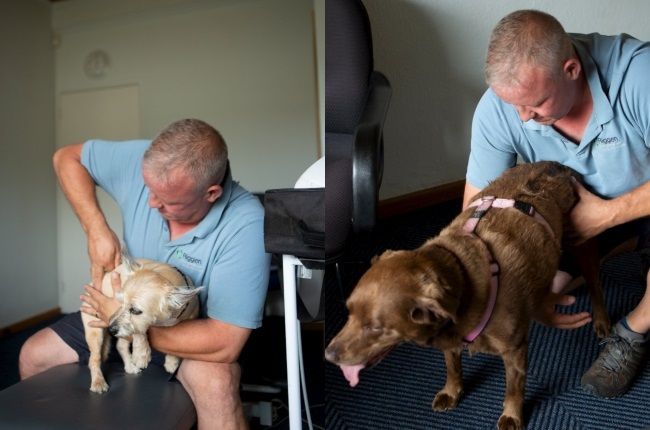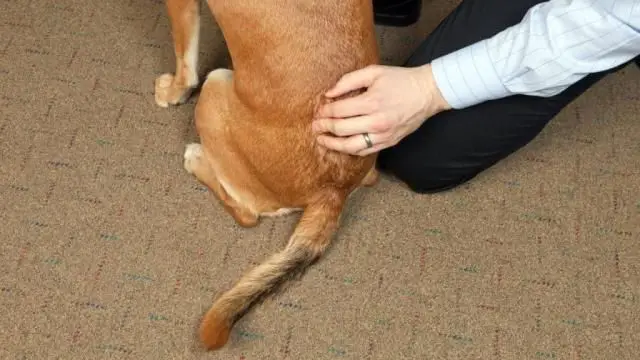Introduction
Chiropractic care has become an increasingly popular complementary treatment for dogs in recent years. Chiropractic focuses on the health and proper alignment of the spine and musculoskeletal system. It is based on the principle that misalignments of the spine and joints, called subluxations, can interfere with the nervous system and cause pain, mobility issues, and other health problems.
The main chiropractic treatment is called an adjustment, where the veterinarian or chiropractor applies gentle, controlled force to specific joints and the spine to restore normal range of motion and alignment. The goals of chiropractic adjustments are to alleviate pain, improve joint and spinal function, support the nervous system, and enhance overall health.
There are several reasons dog owners seek out chiropractic care for their pets. These include treatment of acute injuries, managing chronic conditions like arthritis, alleviating pain, supporting recovery from injuries or surgeries, treating neurological issues, strengthening the immune system, and optimizing athletic performance. Chiropractic is considered a complementary therapy and is often used along with other treatments.
Benefits of Chiropractic for Dogs
Chiropractic care can provide several benefits for dogs by helping to align their spine and joints. When a dog’s vertebrae or joints are misaligned or restricted in motion, it can cause pain, discomfort, and limited mobility.
Chiropractic adjustments from a licensed veterinarian or certified animal chiropractor can help gently reposition the vertebrae and joints, restoring normal alignment. This can immediately relieve painful pressure on nerves, muscles, and soft tissues.
As chiropractic care reduces pain and inflammation, it enables improved mobility and range of motion. Dogs often show increased flexibility and activity levels soon after an adjustment. The realignment of the spine and joints helps take pressure off nerves, allowing proper communication between the brain and body.
Chiropractic care is also beneficial when recovering from injuries such as sprains, strains, and disc problems. By relieving inflammation and tension, chiropractic helps accelerate the healing process. Adjustments can speed recovery time and get dogs back to peak performance.
Overall, chiropractic adjustments can safely provide significant pain relief, improved joint function, enhanced mobility, and faster recovery from injuries in dogs. The benefits stem from realigning the body holistically, reducing interference in the nervous system, and unlocking the body’s innate healing abilities.
When to Seek Chiropractic Care
There are several signs that may indicate your dog could benefit from a chiropractic adjustment. Some of the most common reasons to have your dog seen by a veterinary chiropractor include:

Lameness or difficulty moving – If your dog is hesitant to go up stairs, jump on the couch, or seems stiff when getting up, they may have an issue in their musculoskeletal system that chiropractic could address. Lameness or limping, especially if it comes and goes or shifts legs, points to a need for chiropractic evaluation.
Changes in behavior or appetite – Dogs can’t tell us when they’re in pain, but it often manifests through changes in behavior like increased aggression, clinginess, or withdrawal. Changes in appetite or bathroom habits can also signal discomfort. Chiropractic may be able to realign the spine and resolve any pain or nerve impingement causing these issues.
After an injury or trauma – Events like being hit by a car, falling, or straining themselves can misalign a dog’s spine and cause lingering problems. Seeing a chiropractor shortly after any injury or trauma can help return proper motion and function.
Risks and Contraindications
While chiropractic is considered a safe treatment for most dogs, there are some potential risks and conditions that may make adjustments unsafe. Some of the main risks and contraindications to be aware of include:
Disk Injury
There is a small chance that forceful manipulation of the spine could worsen or cause a disk injury in dogs predisposed to disk disease. Be sure to inform your veterinarian if your dog has a history of disk problems.
Osteoporosis
Chiropractic adjustments are not recommended for dogs with advanced osteoporosis or other conditions that weaken the bones. The manipulative forces could potentially cause fractures in weakened vertebrae.
Spinal Instability
Dogs with instability in their spine due to injury or structural abnormalities are not good candidates for chiropractic. Manipulation could worsen instability and cause further damage.
Spinal Tumors
Dogs with tumors affecting their vertebrae or spinal cord should not receive chiropractic treatment, as it may cause pain or worsen the condition.
Advanced Degenerative Myelopathy
Chiropractic is not recommended for dogs in the advanced stages of degenerative myelopathy, since it will likely provide little benefit and may worsen the condition.
While serious risks are very uncommon, it’s important to be aware of any pre-existing spinal issues your dog may have before beginning chiropractic treatment. Inform your vet of all medical history to determine if adjustments are safe and appropriate.
How Often to Adjust

When it comes to chiropractic care for dogs, one of the most common questions owners have is how often their dog should get adjusted. The general guideline is that most dogs will benefit from maintenance adjustments every 2-4 weeks. However, the ideal frequency can vary considerably depending on the dog’s health status and condition.
During an initial treatment period, especially if the dog is experiencing more severe musculoskeletal issues, more frequent adjustments may be recommended, such as 1-2 times per week. This helps to provide faster relief of pain and restore proper mobility. Once the dog’s condition has improved, the veterinary chiropractor will likely recommend moving to a maintenance schedule.
Some of the factors that determine appropriate adjustment frequency include the dog’s age, breed, activity level, any pre-existing conditions, and reason for seeking chiropractic care. Older dogs or those with chronic conditions often benefit from more frequent adjustments. An active, working, or athletic dog may need more chiropractic maintenance as well. The veterinarian will evaluate all aspects of the dog’s health status to suggest the ideal adjustment schedule.
While every 2-4 weeks is the general rule of thumb for maintenance, close monitoring and customizing the frequency to the individual dog is key. The chiropractic exams at each visit will help assess if the adjustments are holding properly or if the schedule needs to be adapted. Dog owners should follow the veterinarian’s recommended schedule as closely as possible for optimal results.
The Chiropractic Exam and Adjustment
After taking a thorough case history and discussing your dog’s health concerns, the veterinary chiropractor will perform a full physical exam, checking reflexes, muscle tone, flexibility, and the range of motion in all joints. They will gently feel along the spine, assessing each vertebra through palpation to locate subluxations and areas of restricted movement.
The chiropractic adjustment is a specific and controlled maneuver applied by hand or with a handheld device to restore mobility to a joint. It is a gentle technique and does not involve cracking, popping, or twisting. The adjustment aims to remove interference to the nervous system, restoring proper nerve function and communication between the brain and body for improved health and well-being.
An adjustment session may also incorporate other complementary techniques such as massage, stretching, heat therapy, or electrical stimulation. The chiropractor will recommend a personalized treatment plan based on your dog’s health status, symptoms, and exam findings.
Cost and Insurance Coverage
Getting your dog adjusted by a veterinary chiropractor typically costs between $35 and $65 per session on average. However, prices can vary depending on your location, the experience level of the chiropractor, and the extent of treatments needed.
Some pet insurance plans do cover chiropractic care for dogs. If your policy has coverage for alternative therapies, rehabilitation, or medical treatments prescribed by a vet, chiropractic may be included. Be sure to check with your provider to confirm coverage details for chiropractic adjustments and any limits on the number of sessions per year. This can help you budget for any out-of-pocket costs.
Choosing a Veterinary Chiropractor

When looking for a chiropractor to work on your dog, it’s important to find one who has specific experience and training with canine chiropractic. Here are some tips for choosing a qualified veterinary chiropractor:
Find one experienced with dogs specifically – Make sure to choose a chiropractor who regularly works with dogs. Chiropractic methods can vary for different species, so you want someone well-versed in proper techniques for canines. Ask about their experience in treating dogs of similar breed and size to yours.
Board certification in animal chiropractic – Look for a chiropractor who is board certified in veterinary chiropractic by the American Veterinary Chiropractic Association (AVCA). This involves extensive training and demonstrates their expertise. Those with advanced certifications like Certified Veterinary Chiropractitioner (CVCP) have additional specialized education.
Get referral from veterinarian – Your dog’s regular vet may be able to provide a referral to a trusted chiropractor they work with and recommend. This can give you confidence in the chiropractor’s skills and experience. Your vet can also provide helpful advice on your dog’s needs.
Taking these steps when choosing a chiropractor for your dog can help ensure your pet gets safe, effective, and professional chiropractic care. Their experience and qualifications will maximize the benefits for your dog’s wellbeing.
Home Care After Adjustments

After your dog receives a chiropractic adjustment, there are some things you can do at home to support their healing process. Here are some tips for home care following a dog’s chiropractic session:
Monitor your dog carefully in the days following their adjustment. You may notice improvements in their mobility, behavior, or comfort level. Keep an eye out for changes like less limping, more energy, or less sensitivity to touch in places that were previously painful. Tracking their progress will help inform the veterinary chiropractor whether follow-up appointments are needed.
Allow your dog ample time to rest and recover after their appointment. The adjustments stimulate your dog’s nervous system and can make them feel tired afterwards. Make sure they have a comfortable, quiet place to relax. Restrict high-energy activities like running and jumping that could jar the spine while it stabilizes.
Follow any at-home activity restrictions provided by your veterinarian. They may advise confining your dog to a crate or small room to limit movement for a period of time after treatment. This allows the chiropractic adjustments to “set in” and start realigning your dog’s spine and joints. Carefully follow your vet’s home care instructions to support the adjustment process.
With proper home care between sessions, chiropractic adjustments can help improve your dog’s alignment, mobility, and comfort. Monitor their condition closely and communicate any changes to your veterinary chiropractor at your dog’s next appointment.
Conclusion
In summary, there are several factors to consider when determining how often to get chiropractic adjustments for your dog. Most veterinary chiropractors recommend starting with an initial exam and adjustment, followed by routine maintenance visits every 3-6 weeks. More frequent adjustments may be needed if your dog has chronic issues, injuries, or pain. Less frequent visits can be adequate once their structure and function has been restored.
The benefits of routine chiropractic care for dogs include improved joint mobility, reduced pain and inflammation, enhanced nervous system function, and overall wellbeing. Gentle regular adjustments can help prevent injuries and deterioration that comes with age. While an adjustment schedule needs to be tailored to each patient, most dogs benefit from proactive chiropractic maintenance on a regular basis. This noninvasive therapy option is a drug-free way to keep your dog feeling their best.